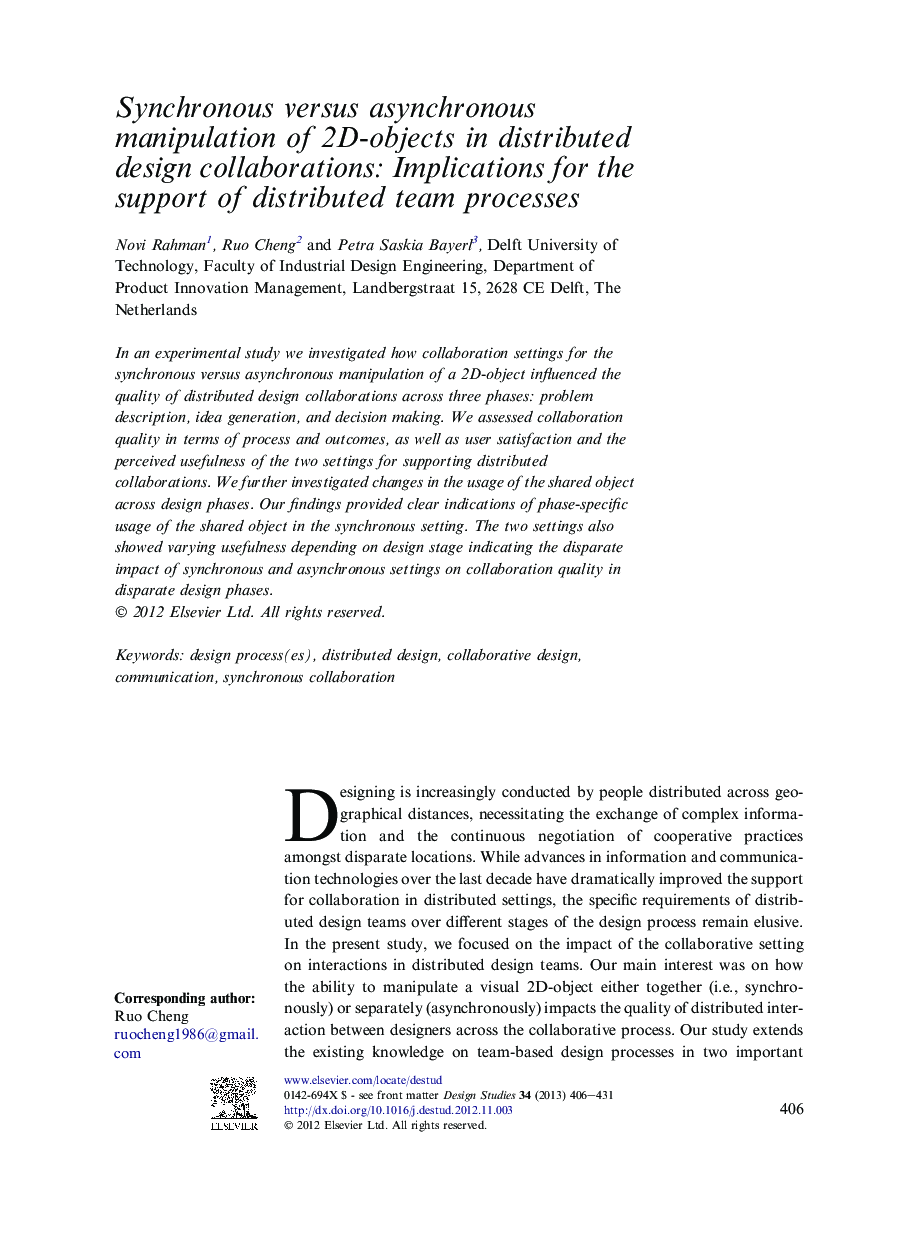| کد مقاله | کد نشریه | سال انتشار | مقاله انگلیسی | نسخه تمام متن |
|---|---|---|---|---|
| 261666 | 503849 | 2013 | 26 صفحه PDF | دانلود رایگان |

In an experimental study we investigated how collaboration settings for the synchronous versus asynchronous manipulation of a 2D-object influenced the quality of distributed design collaborations across three phases: problem description, idea generation, and decision making. We assessed collaboration quality in terms of process and outcomes, as well as user satisfaction and the perceived usefulness of the two settings for supporting distributed collaborations. We further investigated changes in the usage of the shared object across design phases. Our findings provided clear indications of phase-specific usage of the shared object in the synchronous setting. The two settings also showed varying usefulness depending on design stage indicating the disparate impact of synchronous and asynchronous settings on collaboration quality in disparate design phases.
► A synchronous object manipulation setting leads to better collaboration quality.
► A synchronous setting is most useful during idea generation.
► The function of synchronous object manipulation changes across design phases.
► Support for object manipulation is most relevant in later design stages.
Journal: Design Studies - Volume 34, Issue 3, May 2013, Pages 406–431